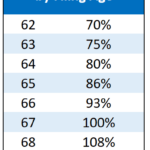
Understanding User Consent and Data Privacy in the Digital Age
Navigating the Complex Digital Landscape of AOL and Yahoo
As part of the digital conglomerate, we’re all familiar with – the Yahoo family of brands, including brands like AOL – it’s important to grasp the intricacies that underpin our online interactions. The virtual portfolios of these influential brands are sprawling and include a number of popular sites and apps, each encompassing their own distinct set of user agreements.
The Role of Cookies in Digital Interactions
An integral part of these online services are cookies. These are small packages of data, otherwise known as web storage technologies, which are stored on users’ devices. These allow service providers to access and read helpful information provided by the user. This practice, although ubiquitous across the digital terrain, is often misunderstood. To clarify, their main function is to tailor and optimise user experiences, and to achieve efficient authentication of users, as well as enhance overall security measures online.
Combating Spam and Online Abuse through Cookies
Another vital niche filled by cookies is the deterrent of spam and abuse. These technologies can regulate access and maintain a safer user environment. Additionally, cookies also play a pivotal role in quantifying the usage of different apps and sites belonging to the AOL portfolio and broader Yahoo family.
The Import of Accepting or Rejecting Cookies
In the same vein, understanding what it means to either ‘Accept all’ or ‘Reject all’ cookies is an essential aspect of digital literacy. Essentially, when a user chooses to ‘Accept all’, they give AOL, and its partners, consent to not only store information but to also access data on a device. This is in conjunction with geolocation data and other personal data like IP addresses, browser histories and search data. This information is primarily used by AOL and its partners for the purpose of personalized advertising and content production.
Additional Purposes of Cookies
Other benefits include service and development improvements, audience research, and advertising and content measurements, all of which serve to enhance user experience, security and the relevancy of promotional content. However, users who are not comfortable with this level of access to their information may opt to ‘Reject all’, thus negating the use of their data for these additional purposes.
Customizing Privacy Settings for Optimal User Control
One of the most empowering tools provided by AOL and its affiliates is the option to ‘Manage privacy settings’. This feature allows users to have intense control over their data, beyond the binary decision to ‘Accept all’ or ‘Reject all’. As digital consumers, we retain the right to adjust our choices at any point through either the ‘Privacy & cookie settings’ or through accessing the ‘Privacy dashboard’ links on AOL affiliated properties.
Clarity on Data Privacy Policies
For those seeking further reassurances or clarifications on how personal data is being handled by AOL as part of the Yahoo family, additional resources are readily accessible. Comprehensive explanations regarding data collection and usage can be found within our explicitly formulated privacy and cookie policies, designed with transparency and user-awareness in mind.
Conclusion
In the ever-evolving landscape of digital technology and privacy, users must familiarize themselves with terms of use and cookie policies inherent to the sites and apps they interact with. Only through deliberate, informed consent can we use digital spaces that respect our privacy and enrich our online experiences.
Originally Post From https://www.aol.com/social-security-fairness-act-adds-143116278.html

